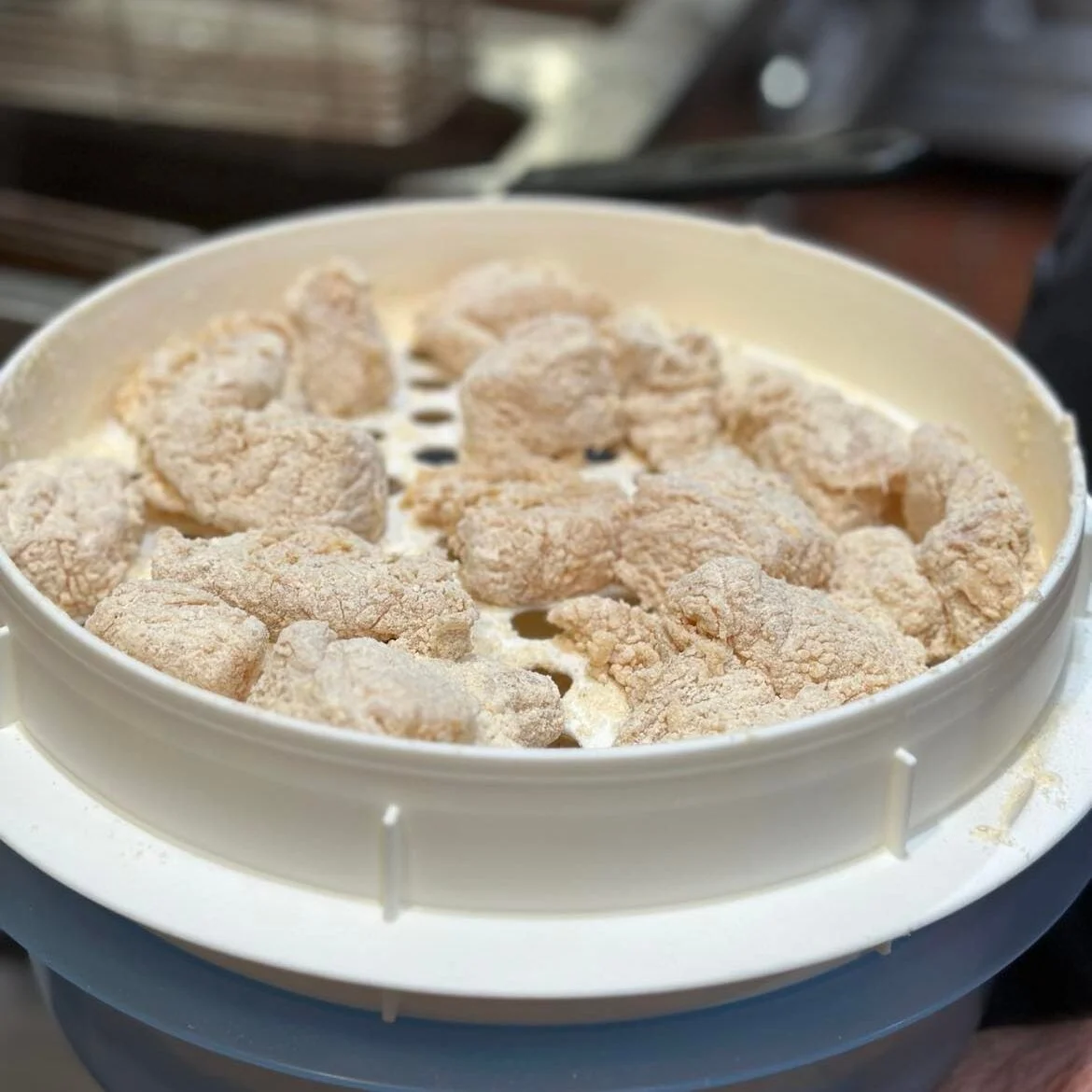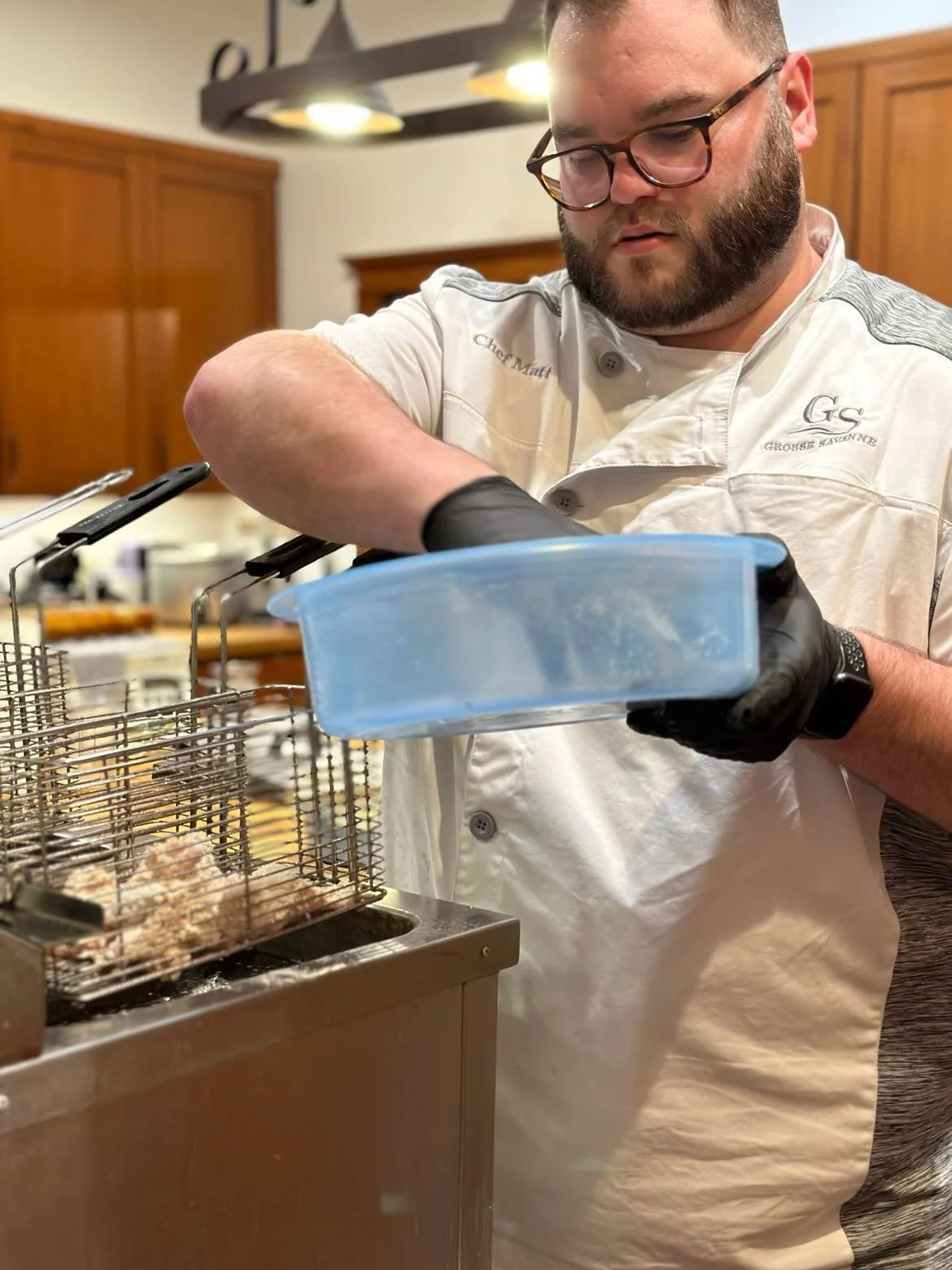There are plenty of of fish in the sea and as many ways to prepare them. But while species preference may vary, frying remains the most popular culinary method. Sure, grilling, smoking, baking, and blackening have their place; and while we’re aware of the health considerations, fried fish in moderation is a fine way to enjoy your fresh catch. In this piece, we’ll explore not only how to fry fish, but more specifically, how long to fry fish.
Chef Matt Whitney regularly serves the crispy cuisine to anglers and hunters at Gross Savanne Lodge
in Lake Charles, Lousiana. Blending culinary arts studies at Sowella Technical College
with his traditional Cajun roots, Whitney’s fry game often includes creative presentations, but he shared a handful of fish fry fundamentals that’ll keep anyone on point.
With a fondness for speckled trout, grouper and freshwater catfish (channel cats and blues), Whitney starts at the end by noting how portions depend on the size of the group he’s serving—individually plated entrees, or self-serve nuggets for appetizers or main course.
“I like a thinner filet, because I like the crispier texture,” Whitney said. “If I have to prepare them in advance, I don’t have to worry about them remaining crispy. With thicker pieces, they tend to get a little soggy after a while.
“It also depends on how I’m serving the fried fish. If I’m topping it, I like a whole filet, but if I’m serving it as an appetizer or on a po’ boy
, I like to cut it into chunks. The chunks come in handy with larger groups because they tend to stay crispy longer.”
The Prep

Whitney has dialed in a dependable formula—three parts self-rising flour to two parts corn flour. If his guests want super crispy fish, he goes straight cornmeal.
At the cleaning table, some prefer neatly trimming from the dorsal downward and basically unzipping each filet from the rib cage/gastric cavity, while others just knock the sides off and cut out the ribs and innards. Either way, bag and chill as you go to maximize freshness.
If you catch more than you can eat in one sitting, freezing filets ensures future meals. The USDA says frozen fish or shellfish remain safe indefinitely, but for optimal flavor and texture, freeze cooked fish for up to three months or raw fish for up to eight months.
Freezing filets in water definitely eliminates those air pockets where ice crystals form, but once thawed, you may find water-logged fish taking on a soggy texture. Not necessarily inedible, but this can affect frying efficiency and overall presentation.
Your best bet is to invest in a vacuum sealer. Options range from countertop models to handy compact devices small enough to carry on the boat, or on camping trips.
How Long to Fry Fish

Deep frying should take 5-7 minutes depending on the size of the pieces you’re frying and it shouldn’t need to be flipped. Chef Matt Whitney
It’s a pretty straightforward premise: drop fish into hot oil until it’s crispy. However, details matter.
Oil Choice: The Food Network offers three criteria for selecting a fry oil: neutral flavor, affordability, and a high “smoke point.” The latter refers to the point after which the oil starts to burn. This can leave your fish with a bitter taste, while creating serious kitchen hazards. Oils with smoke points of at least 400 degrees are ideal for fish fries.
“I really like peanut oil, but you have to consider allergies with that one,” Whitney said. “I usually choose canola oil because it cooks really well and it has a clean taste.”
How can you tell when the oil is ready?
“You can use a thermometer and look for at least 350 degrees, but I try to keep it under 400,” Whitney said. “Once you get over 400, your oil starts to have a bad taste.”
Lacking a thermometer, Whitney suggests sprinkling a small amount of your fried fish breading into the oil. When it bubbles, you have the green light.
The Outer Layer: Having tried most every option for his fried fish breading, Whitney has dialed in a dependable formula—three parts self-rising flour to two parts corn flour. If his guests want super crispy fish, he goes straight cornmeal.
“You can do a wet (batter) a dry (breading), you can do an egg wash (with dry breading); everything works really well with fish,” Whitney said. “If you want to taste the fish, going straight into the breading works well.
“I like to add a little bit of the wet batter, because I want to have mustard and different (seasoning) to bring out the flavors.”
Where It Happens: Whitney finds a deep cast iron pot will fry to perfection, but any heavy bottom pot can work. Just dip the fried fish with a spider whisk and lay them on a plate with paper towels.
“You want something deep so you don’t have to worry about excessive grease splashing,” Whitney said. “And preferably nothing too thin, because you want the pot to hold its heat so when you drop in whatever you’re frying, the temperature doesn’t drop too drastically.”
For small batches, Whitney appreciates stovetop frying’s efficiency, but for large groups, you can’t beat a basket-style deep fryer
—electric or propane burner.
When’s It Done?: “I use the old-school method: If it’s floating, it’s done,” Whitney said. “I tend to let it go a little longer, because my batter may not be as crispy as I like it.”
Seasoned chefs can effectively operate with their inner timer and visual observations, but for a more precise approach Whitney offers guidelines for how long to fry fish.
“For pan frying, 3-4 minutes on both sides is right. Deep frying should take 5-7 minutes depending on the size of the pieces you’re frying and it shouldn’t need to be flipped. It doesn’t start to come to the surface until it’s almost done cooking, so both sides get cooked.
“A good rule of thumb as to when it is done, is it should flake when broken apart.”
Fry times will vary by species, as the denser meat of amberjack, blacktip shark, or cobia will need a little more time than similar size pieces of lighter fillets like those of speckled trout, flounder, or mangrove snapper. Same rule applies to freshwater species (consider denser northern pike, versus lighter crappie fillets).
Finishing Touches
A few parting thoughts for your next fish fry.
Serve It Up: If you want to dress up your fried fish, you could make Baja fish tacos with avocado cream and pickled red onions, add a seafood sauce with shrimp, crabmeat, and shellfish, or top it with Whitney’s favorite: crawfish étouffée.
Some find a squeeze of lemon or lime juice sufficient, while a splash of your favorite hot sauce sits nicely atop that crispy surface. For simple, elegant presentations, Whitney whips up a jalapeño coconut tartar sauce.
The Smoke is No Joke: Even with an oil of high smoke point, you can still have issues with residual batter/breading. Whitney suggests removing any debris with each round of frying. Let it sit too long and burning pieces will infuse a bitter taste.
Proper disposal: Cooking oils are guaranteed drain cloggers, but tossing “out back” is a big environmental no-no. Whitney saves his bottles and, after used oil cools, he refills the containers and properly disposes.





